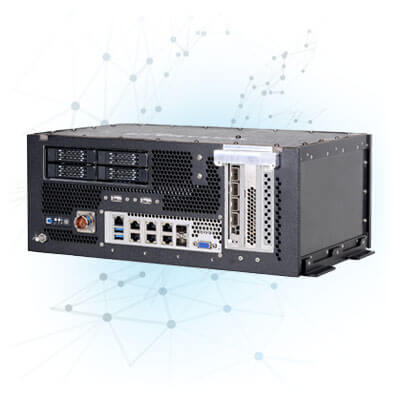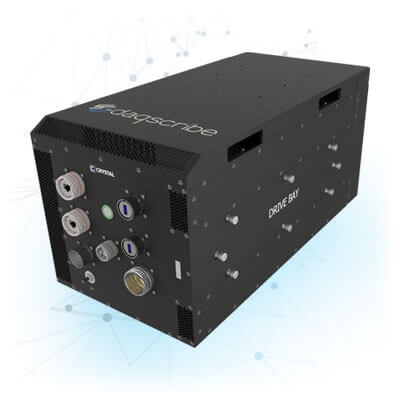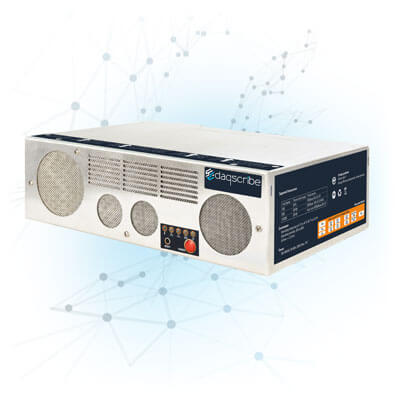Generation (“G”)
Refers to the different stages of mobile communication technology standards. Each generation has standards that define the technological implementation and capabilities of the network. “5G” stands for the fifth generation, which provides higher speeds, reduced latency, and greater capacity than 4G LTE.
Gig
Colloquially, this is a shortened term for gigabyte (GB), which is a measure of data storage capacity. It can also refer to gigabit (Gbit or Gb), which is a measure of data transfer rates.
Satellite Communications (SATCOM)
The use of satellite technology for telecommunication. SATCOM enables remote regions to access telecommunication services, provides reliable communications for military operations, and can support live broadcasting.
4th Generation Long Term Evolution (4G LTE)
A standard for wireless broadband communication. It is the fourth generation of mobile network technology, succeeding 3G and providing faster data speeds and improved network capacity.
5th Generation New Radio (5G NR)
The global standard for a unified, more capable 5G wireless air interface. 5G NR will allow for higher data rates, reduced latency, energy savings, cost reduction, higher system capacity, and massive device connectivity.
Backhaul (BH)
The intermediate link between the core network, or backbone network, and the small subnetworks at the “edge” of the entire hierarchical network. In cellular networks, this is the part of the network that connects cell sites to the central exchange.
Baseband Unit (BBU)
A unit that processes baseband signals in a mobile network base station. It handles tasks such as channel coding, modulation/demodulation, and may control RF devices directly.
Base Station Transceiver (BTS)
Part of the base station that handles the radio communications with the mobile phones (cellular devices). It consists of transceivers, antennas, and associated electronics.
Central Unit (CU)
In 5G architectures, the CU is a component of the radio access network responsible for controlling the baseband units, often processing the higher layers of the protocol stack.
Common Public Radio Interface (CPRI) protocol
A standard for the communication link between radio equipment controllers (RECs) and radio equipment (RE). It allows for flexible and efficient product differentiation for radio base stations.
Core Network (CN)
The central part of a telecommunications network that provides various services to customers who are connected by the access network. The core network’s key function is to route telephone calls and manage the network.
Dark Fiber
Optical fiber infrastructure that is currently in place but is not being used. Dark fiber can be leased to individuals or other companies who want to establish optical connections without the expense of laying new cables.
Data Center (DC)
A facility used to house computer systems and associated components, such as telecommunications and storage systems. It generally includes redundant or backup power supplies, redundant data communications connections, environmental controls, and various security devices.
Distributed Unit (DU)
A component in a cellular network architecture, especially in 5G networks, which is responsible for the lower-layer processing tasks. It is typically connected to the radio units (RUs) and to the central unit (CU), forming part of the base station’s functional split architecture.
Enhanced Common Public Radio Interface (eCPRI) protocol
An evolved version of the CPRI interface that allows more efficient and flexible radio data transmission between the radio equipment control (REC) and the radio equipment (RE). eCPRI is designed to support the increased throughput and latency requirements of 5G networks.
F1 interface
A specified interface in 3GPP 5G networks that functionally splits the gNB (next-generation NodeB) into CU (Central Unit) and DU (Distributed Unit). The F1 interface supports the connection and communication between the CU and DU.
Fronthaul (FH)
The segment of the network that connects the base station’s remote radio heads (RRHs) to the DU. It is a part of the C-RAN (Cloud-RAN or Centralized-RAN) architecture, where radio and processing functions are distributed for better performance and efficiency.
Internet Protocol (IP)
A method or protocol by which data is sent from one computer to another on the Internet. Each computer (known as a host) on the Internet has at least one IP address that uniquely identifies it from all other computers on the Internet.
Longhaul (LH)
Refers to the data transport infrastructure that spans long distances, typically between cities, regions, or countries. Longhaul networks use high-capacity fiber optic cables to connect major network nodes across extensive geographic areas.
Multiple Input, Multiple Output (MIMO)
A method for multiplying the capacity of a radio link using multiple transmission and receiving antennas to exploit multipath propagation. MIMO is a key part of modern wireless communication standards, including Wi-Fi, LTE, and 5G.
Midhaul (MH): A term used in the context of C-RAN that refers to the network segment connecting the DU to the CU. It is part of a three-tiered C-RAN architecture that also includes fronthaul and backhaul.
Optical Transport Network (OTN)
A set of Optical Network Elements (ONE) connected by optical fiber links, able to provide functionality of transport, multiplexing, routing, management, supervision, and survivability of optical channels carrying client signals. It is a protocol-independent layer 1 network for supporting high-bandwidth signal transmission in a secure and reliable manner.
Radio Access Network (RAN) Infrastructure
The part of a telecommunications system that connects individual devices to other parts of a network through radio connections. RAN infrastructure includes the base station’s components, such as antennas, tower mounts, and the baseband processing units, and provides the fundamental connection between mobile devices and the core network.
Radio Equipment (RE)
In the context of a cellular network, RE typically refers to the hardware responsible for radio transmission and reception. It includes the Remote Radio Heads (RRHs) and Radio Units (RUs) which are deployed at the cell site.
Radio Equipment Controller (REC)
A device in the base station that controls the Radio Equipment (RE), often including the Distributed Unit (DU) and the Baseband Unit (BBU). It handles processing tasks and ensures that the RE operates within the specified parameters.
Radio-over-Ethernet (RoE)
A technology that encapsulates radio signals into Ethernet packets, which are then transmitted over Ethernet networks. This approach is used in modern telecommunication systems to integrate radio access networks with packet-based Ethernet backhaul and fronthaul infrastructures.
Passive Optical Network (PON)
A telecommunications technology used to provide fiber to the end consumer, both domestic and commercial. A PON’s distinguishing feature is that it implements a point-to-multipoint architecture, in which unpowered fiber optic splitters are used to enable a single optical fiber to serve multiple end-points.
Remote Radio Head (RRH)
A component used in an advanced cellular network base station that incorporates the radio frequency circuitry and the antenna. RRHs are typically deployed on a tower or high structure and are connected to the baseband unit (BBU) via a fronthaul link.
Remote Radio Unit (RRU)
Similar to an RRH, an RRU is a device used in a base station that contains the radio frequency circuitry but may also include some baseband processing capability. RRUs are typically deployed on or near antennas and connected to the base station main unit.
Stream Control Transmission Protocol (SCTP)
A reliable transport protocol designed to transport Public Switched Telephone Network (PSTN) signaling messages over IP networks, but is also used for other applications. SCTP provides some of the same service features as TCP and UDP, with additional features such as multi-homing and multi-streaming.
Wavelength Division Multiplexing (WDM)
A technology which multiplexes multiple optical carrier signals on a single optical fiber by using different wavelengths (i.e., colors) of laser light to carry different signals. This allows for a multiplication in capacity, as well as the ability to run multiple types of traffic over a single fiber without interference.




